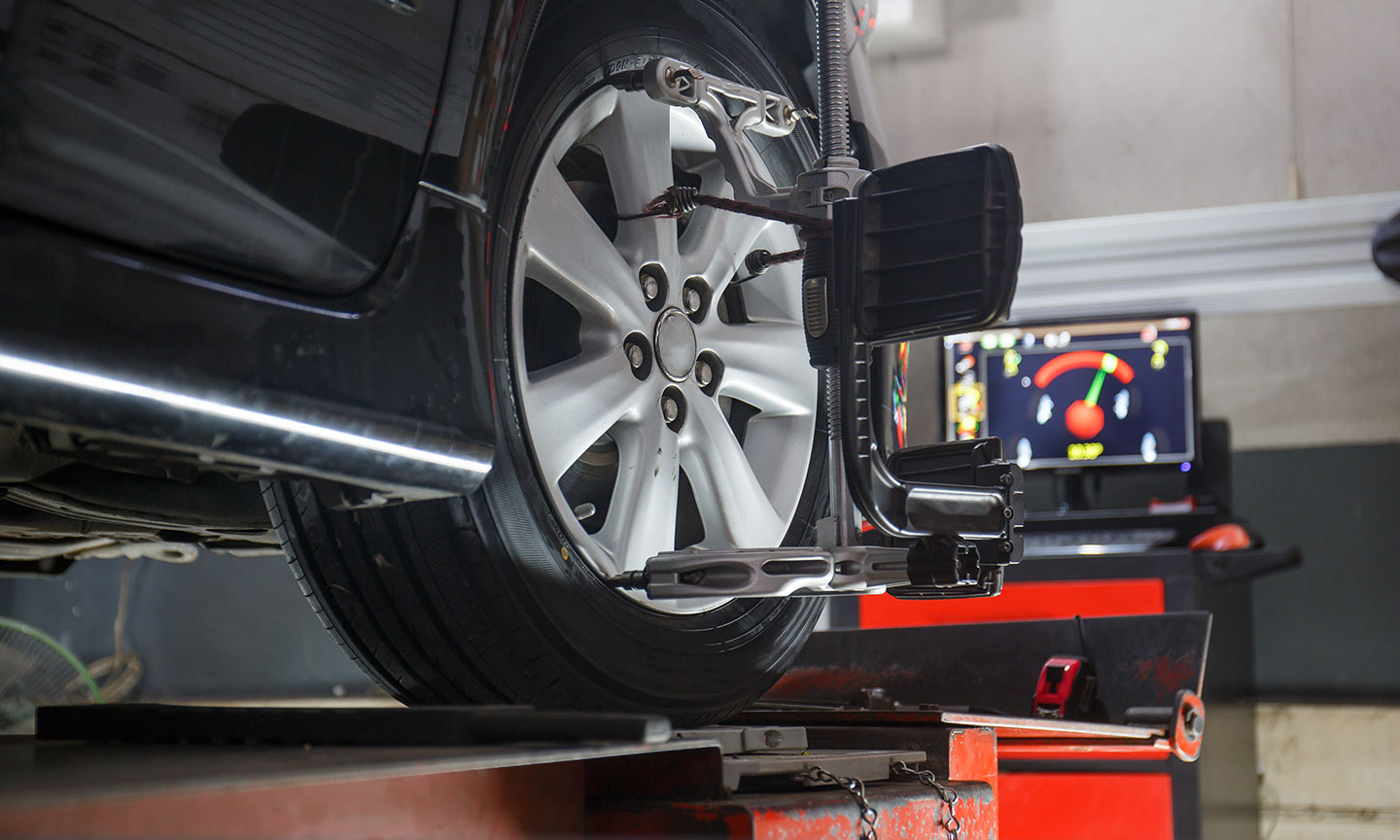Keep Your Car in Harmony with Regular Wheel Alignments

With so many moving parts regularly moving at high speeds over typically uneven terrain, it should come as no surprise cars can become misaligned over time. For this reason, it's important to have a certified Service Center like the one at Client take the routine but vital steps to ensure your vehicle stays properly aligned.
Vehicle alignment is a process undertaken by a technician that ensures your vehicle is roadworthy and optimized to perform at its best. Your vehicle's wheel alignment can make an enormous difference to overall performance, fuel efficiency, and safety. The process consists of adjusting the angles of the wheels so that they are absolutely parallel to one another, and that they are perpendicular to the ground. This is a technical and complex mechanical procedure that should only be carried out by a qualified technician with proper equipment.
The Technical Terms
As part of a wheel alignment, your technician will take a number of measurements with a computer and will adjust a number of different components to ensure that the vehicle performs appropriately. The mechanic will measure the camber of the wheels—the vertical tilt of the wheel. If it tilts outwards the camber is positive. If it points inwards, the camber is negative. Either of these conditions can cause reduced traction in a straight line.
Caster is the term given to the angle of the steering axis. If the wheel is in front of the load (that is, the axis is leaning backward), this is described as positive caster. If the reverse is the case, then the car is experiencing negative caster. Caster will not affect the tire wear, but it may affect the vehicle’s steering.
Toe refers to how the horizontal tilt of the wheel. Wheels that are toed in point towards the center of the front bumper and wheels that are toed out will point outwards towards the front edges of the fenders. Toe is one of the most important alignment angles for tire wear and handling.
Signs You Need an Alignment
There are a number of signs that your vehicle might require an alignment. An obvious sign will be visible traces of uneven tire wear. This most often occurs on the outside of the tire. If left unresolved, this could eventually affect the integrity of the tire and your safety while on the road. If you see any signs of tire wear, contact your mechanic as soon as possible.
Other signs will be more evident while you're driving. Your car may drift to one side of the road without you turning the steering wheel or when you're otherwise driving straight. Your steering wheel may vibrate or judder. If you're driving straight, your steering wheel may not be centered and you may find yourself compensating to one side or the other. If any of these signs occur, arrange to have your vehicle inspected at Client as soon as possible.
When To Get an Alignment
Whenever you have new tires fitted or get maintenance done on your wheels or suspension, make sure the technician performs an alignment before you drive away. Adjusting any of the mechanical parts of the car’s suspension, even by a very small amount, can affect the alignment. Make sure your technician undertakes this procedure whenever you have work carried out. It is important to bring your vehicle in for routine maintenance, especially if you've driven a long distance.
Vehicle alignments ensure that your car’s suspension is performing at its optimum capability, enabling better fuel economy and protecting your safety. The Client Service Center recommends you make wheel alignments a part of your regular service routine. Schedule an appointment today, and we can make sure your wheels are functioning just like they ought to.
